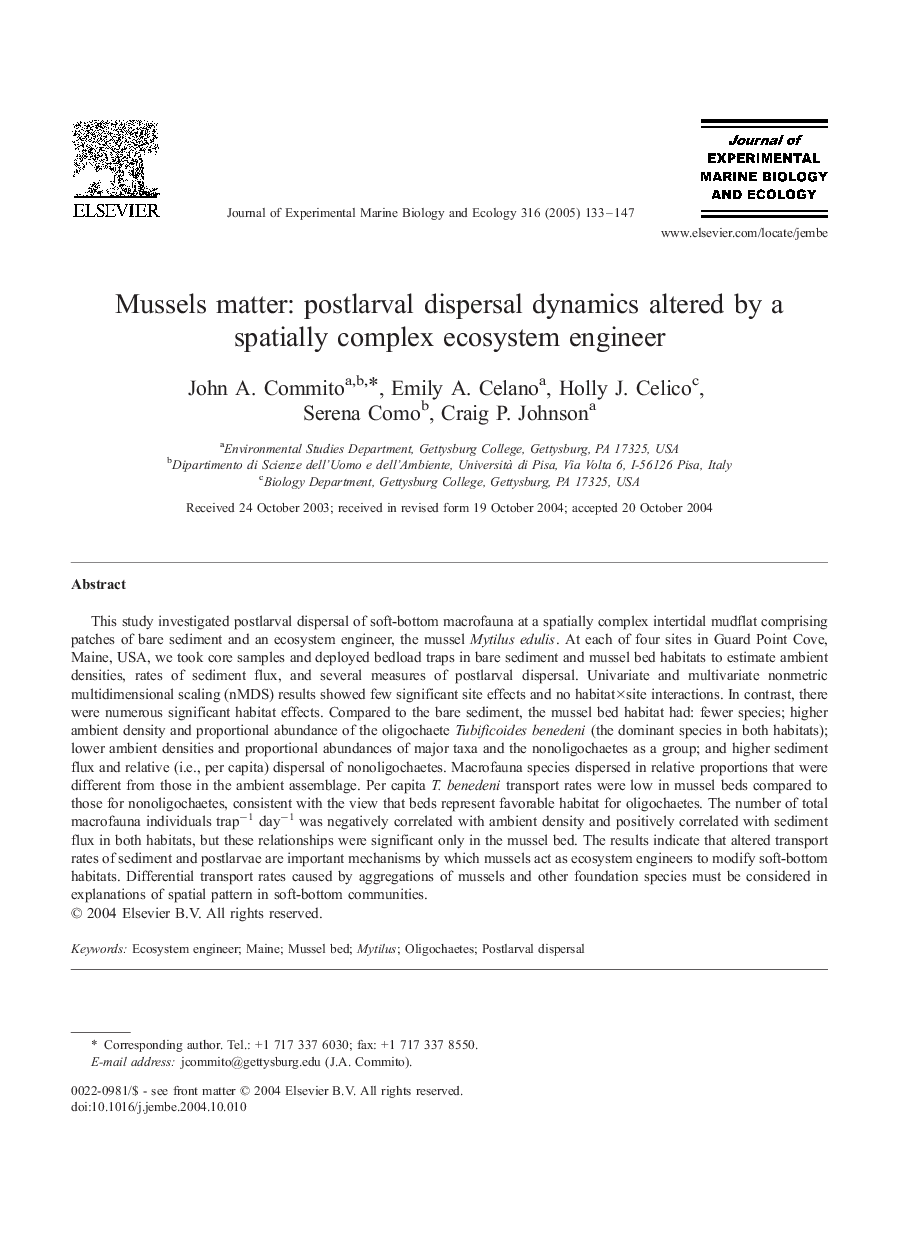| Article ID | Journal | Published Year | Pages | File Type |
|---|---|---|---|---|
| 9448888 | Journal of Experimental Marine Biology and Ecology | 2005 | 15 Pages |
Abstract
This study investigated postlarval dispersal of soft-bottom macrofauna at a spatially complex intertidal mudflat comprising patches of bare sediment and an ecosystem engineer, the mussel Mytilus edulis. At each of four sites in Guard Point Cove, Maine, USA, we took core samples and deployed bedload traps in bare sediment and mussel bed habitats to estimate ambient densities, rates of sediment flux, and several measures of postlarval dispersal. Univariate and multivariate nonmetric multidimensional scaling (nMDS) results showed few significant site effects and no habitatÃsite interactions. In contrast, there were numerous significant habitat effects. Compared to the bare sediment, the mussel bed habitat had: fewer species; higher ambient density and proportional abundance of the oligochaete Tubificoides benedeni (the dominant species in both habitats); lower ambient densities and proportional abundances of major taxa and the nonoligochaetes as a group; and higher sediment flux and relative (i.e., per capita) dispersal of nonoligochaetes. Macrofauna species dispersed in relative proportions that were different from those in the ambient assemblage. Per capita T. benedeni transport rates were low in mussel beds compared to those for nonoligochaetes, consistent with the view that beds represent favorable habitat for oligochaetes. The number of total macrofauna individuals trapâ1 dayâ1 was negatively correlated with ambient density and positively correlated with sediment flux in both habitats, but these relationships were significant only in the mussel bed. The results indicate that altered transport rates of sediment and postlarvae are important mechanisms by which mussels act as ecosystem engineers to modify soft-bottom habitats. Differential transport rates caused by aggregations of mussels and other foundation species must be considered in explanations of spatial pattern in soft-bottom communities.
Related Topics
Life Sciences
Agricultural and Biological Sciences
Aquatic Science
Authors
John A. Commito, Emily A. Celano, Holly J. Celico, Serena Como, Craig P. Johnson,
